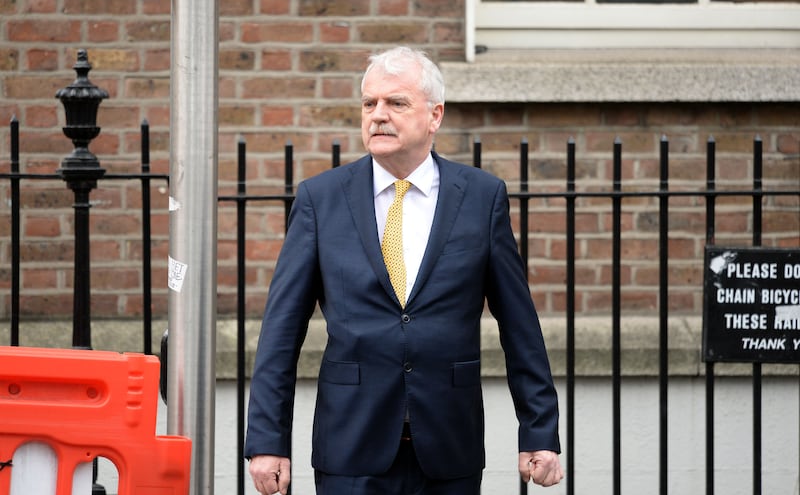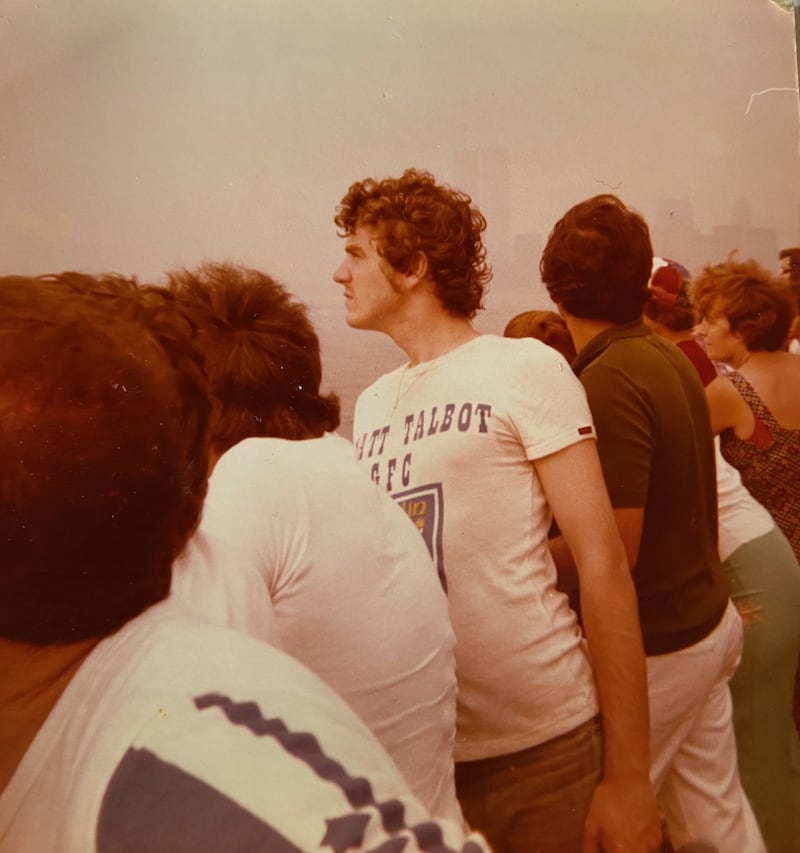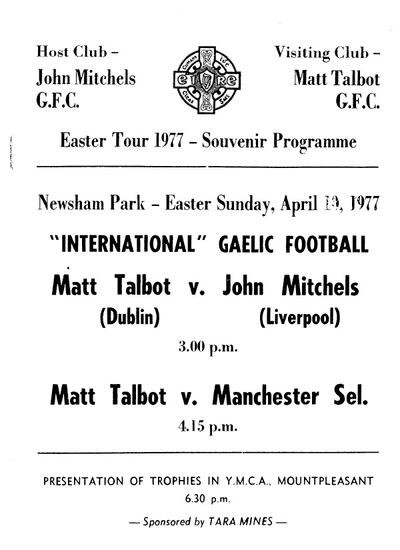Though Brendan Crawley lives near Harvard University now, he still hangs on to a Monaghan accent that would shave thorns off a briar. He’s 76 and hasn’t been resident in Inniskeen in well over 50 years but home is home and you are who you are.
His father Jack captained Monaghan in the 1938 All-Ireland semi-final, a game that has a long comet’s tail for two reasons. One, it was the last semi-final appearance by Monaghan until 1979 – this weekend against Dublin is only their fifth time in the final four since that day 85 years ago. And two, it was the first ever GAA commentary by an 18-year-old schoolboy named Micheál O’Hehir.
So his Monaghan bona fides are a given. But this is a Dublin story. More than that, it’s an inner-city Dublin story, about the part of the capital that is closest to Croke Park but furthest from it too. Where the GAA literally looms over the area without always casting the kind of shadow it should. Except it did, long ago, in the decade when Crawley was about the place.
In 1976, he was a teacher in Scoil Plás Mhuire on Dorset Street. Nobody who was around at the time would be inclined to sugar-coat what that meant. The kids came from the poorest part of a city that was ground down by unemployment. They pitched up from the flats on Dominic Street and Hardwick Street and Henrietta Street, places that had been all but abandoned by government and routinely ignored by sport, particularly the GAA.
READ MORE
“There was no club for any kids to join,” Crawley says now. “They played in the school – we got them started playing when they were seven. But when they got to 11 or 12 and they were leaving to go to secondary school, none of them had a club to keep playing in. So a few of us got the parents together and said we were going to set up a club for them. We called it Matt Talbot GFC.”

It was almost a revolutionary act. Nobody in authority was spending a lot of time busying themselves with the needs of inner-city kids. Plenty of boys from the flats turned up at school hungry, lots had chaotic home lives. As the 1970s rolled into the 1980s, heroin slithered into the area too. If setting up a club was all Crawley did, it would have been plenty.
“The social aspect to it was huge,” says Finian McGrath, back then a teacher in Plás Mhuire, later a TD. “There was a gang of us, young teachers straight out of college and we saw Crawley do this and he got us to help him. He was basically setting up his own inner-city taskforce before anyone had ever heard of the term. It was totally outside the department, he didn’t bother himself with asking anybody’s permission or anything like that.
“His whole thing was, ‘Can we help these boys develop their own self-esteem? Can we do better for them?’ The older I got and the more I got involved in politics, the more I heard different variations of this kind of thing. People with good intentions that were good at giving speeches but when it came down to it, a lot of it was talk. Brendan was the opposite – he wasn’t all talk. He really formed a connection with these boys and gave them something that was theirs.”
McGrath became club chairman and the Matt Talbots entered the North Dublin leagues. They trained wherever they could – Fairview Park, mostly, Whitehall occasionally. It was all a bit ad hoc and haphazard but it was something.

Crawley wanted it to be more though. Before joining the school, he’d spent five years living in England, working on the sites and making a nomad’s road for himself around the place. Any city he went to, he plugged into the Irish community and particularly the GAA. So once he had the Matt Talbots up and running, one of the first things he did was organise a trip to Liverpool to play the John Mitchels club.
To some of them, he may as well have been suggesting a trip to the moon. This was Dublin in 1977 – you didn’t just skite across to England for the weekend. But Crawley got it organised, got sponsors, raised money and they all headed off on the boat. All the while, he was in their ear, telling them they were history-makers.
“I told them they should be so proud of what they were doing,” he remembers. “To have our little kids from the flats to be the first ever to play Gaelic football against second-generation Irish kids in England. We were treated like lords over there because nobody had ever come to them to play before. When we were going home, about 100 people came to the boat to see us off.”
Over the following decade, the Matt Talbots went back to Liverpool, to Manchester, to New York, to New Haven. Since they already had a taste for the exotic, Crawley brought them to Inniskeen as well, forming a link with his home club that survived for decades. He opened up new worlds to them, geographically, personally, the lot.
“The genius of those trips was, he didn’t just confine them to the lads who were playing football,” McGrath says. “That became a thing that all the little lads from the flats heard about and wanted to get in on. So if they came up to him at school and asked could they go on the next one, Crawley would tell them that if they behaved for the next six months, he’d keep a spot for them. It improved discipline in the school no end.”
Ultimately, the Matt Talbots lasted a decade, give or take. By 1986, Crawley had met a girl from Longford and was sick of paying 80p in the pound out of his wages on taxes and the rest. He and Maureen were saving for a flat in Glasnevin but getting nowhere with it so they decided to go to America for a few years. A few became few more and now they’re 37 years over there.

With Crawley gone, the momentum behind the Matt Talbots started to die off. A couple of their players made it on to Dublin minor panels but they never officially had a senior team. By 1987, the football side of things had more or less run aground. But the link with Crawley stayed as strong as ever, regardless of which side of the Atlantic anyone was one.
“I couldn’t afford to teach in America!” Crawley laughs. “You’d make no money doing that here. No, I started painting houses and doing bits like that. One day, I was painting a house and another lad was cleaning it and he was talking about retiring. I got him to lease his business to me and I took it over and I’ve been doing that ever since.
“When we got set up over here, loads of the Matt Talbot boys came out to stay with us. They were older by then and they came over looking for work and they often stayed here while they were getting set up. When Maureen and I got married, one of the Matt Talbot lads was my best man.”
Over the years, the Crawley house became a staging post for countless Irish people passing through and getting their bearings. Various Riverdancers bedded down there, endless GAA teams. Inniskeen Grattans, Matt Talbot GFC, all persuasions and none. The Crawleys welcomed them all.
“I’ll tell you a story,” he says. “Ach, I shouldn’t be telling it but I will. I came across a fella by the name of Brother Ennis one time. He was involved in the school in Armagh – this was the late ‘90s and they were winning McRory Cups and that. Anyway, he brought them over to Boston and we put them up in the basement of the house. There was 29 of them! This is Cormac McAnallen and the boys.
“They were only youngsters at the time so they couldn’t go to the pub – you have to be 21 to drink here. So I says, ‘Boys, move the mattresses there and we’ll put on a disco.’ And they were looking at me going, ‘Sure what good is a disco if there’s only us at it?’ They had a point – so I rang up Au Pairs America and next thing you know, 25 women landed up to the house! That was a great night.”

He still cleans houses in and around Harvard – five hours a day, 150 bucks into his hand. It keeps him busy and he has no notion of stopping for a while yet. He used to come home for All-Ireland finals but his line on tickets dried up in recent years as Croke Park got more corporate. It’s harder to get back now anyway – Maureen had an aneurysm a while back and though she goes to a care home for part of the day, he’s her primary carer.
“Our whole life has changed,” he says. “She’s a great woman, I owe her so much. She put up with a lot from me over the years. We’re stuck a bit now but I don’t mind that at all. I can safely say I am so thankful to have had a full life. And honest to God, the best thing I ever did was the Matt Talbots. I got so much out of it. It was the biggest thing in my life.”
Today, at lunchtime in Boston, he’ll fire up his GAAGO and sit down to watch his beloved Monaghan take on Dublin in an All-Ireland semi-final. He wouldn’t say he’s confident – because, how could you be? But nobody needs to give him lectures on beating the odds so he’ll tune in and he’ll watch and he’ll hope.
[ Monaghan hoping not to be dragged out of their leagueOpens in new window ]
And if the camera pans back at any stage and they show an aerial shot, he’ll see the rows and blocks of Lego rooftops of the north inner-city where, for a time, he made the GAA a portal to a world beyond.
What a thing to have done.





















